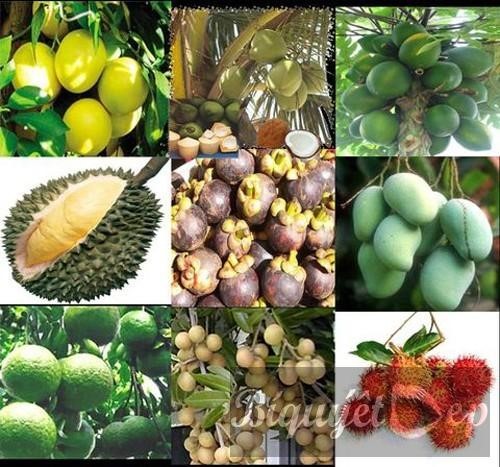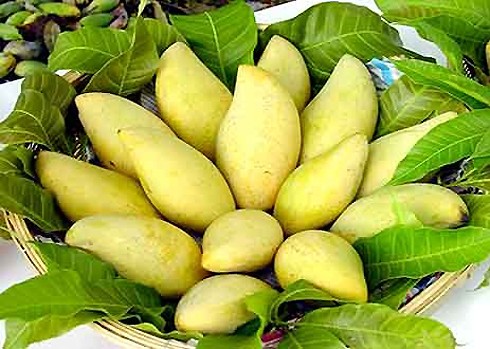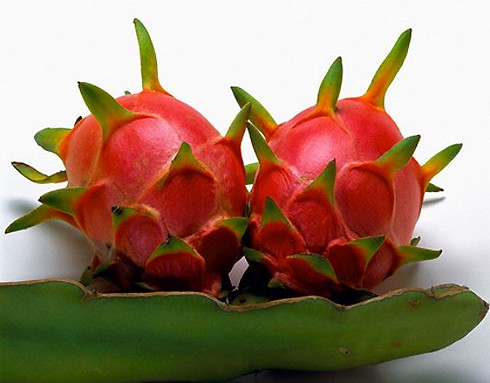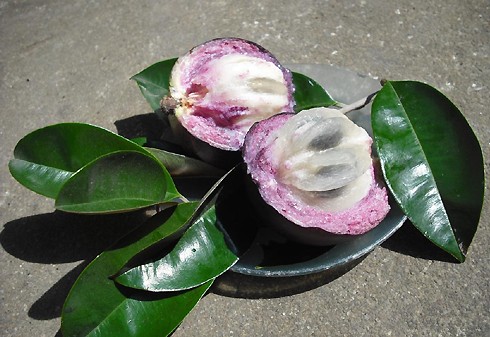(VOVworld) – Fruit growing is the strong point of the Mekong River Delta thanks to its rich soil and good weather. To export fruits more profitably, the local agricultural sector is paying close attention to improving product quality and building brands.
The Mekong Delta, which leads Vietnam in rice, fruit, and aquaculture output, has more than 295,000 hectares producing fruit.
 |
| These are key fruits of Mekong River Delta |
But in the past, the quality and prices of the region’s products have been unstable, leading to weak export revenues.
Branding key products with a geographical indication is considered essential if the local sector wants to boost its export revenues.
 Hoa Loc sweet mango
Hoa Loc sweet mango
Tien Giang leads the delta in fruit-growing area - 60,000 hectares – boasts many specialties such as Hoa Loc sweet mangos, Lo Ren star apples, Cho Gao Blue Dragons, and Ngu Hiep durians.
Tien Giang’s current export revenues are low, mainly due to a lack of information about export markets and poor coordination between producers and distributors. To improve the situation, the provincial agriculture has developed production models consistent with Vietnamese Good Agricultural Practices (VietGAP) and Global GAP, an internationally-recognized set of farm standards that follows Good Agricultural Practices.

Cho Gao Blue Dragons
Vo Ngoc Diep, the owner of a blue dragon farm in Cho Gao district, has successfully applied biologically safe production techniques. As a result his produce sells at a price 5 to 10% higher than produce grown using other models. Diep says: “We know that to export more fruit at higher prices, we must grow the fruit following VietGap standards. But I find that blue dragons are one of the 7 key products of Tien Giang that are grown following these standards. I myself don’t find any difficulties in implementing the standards. We just need to take careful notes to do it professionally.”
Ben Tre, another Mekong province, is famous for green-skin grapefruit, rambutan, longan, and jackfruit which have recently penetrated demanding markets like the US, Japan, and the Republic of Korea. Nguyen Huu Tam, head of Tien Long Orchard Farm in Chau Thanh District, shared his experience:
“To gain a firm foothold in demanding markets, we need to closely adhere to the VietGap standards and the recommendations of agricultural experts. The exported fruits should be safe for consumers, safe for the environment, and guarantee accurate geographical indications.”

Lo Ren star apples
Many provinces are currently conducting setting up specialized fruit-growing areas that match the fruit to local soil and weather conditions and consciously work to build trademarks. Tran Quoc Tuan, director of Tra Vinh’s Department of Trade and Industry, says the plan is part of the government’s project to restructure the agricultural sector. He explains further: “In the future we’ll continue to work with relevant agencies to determine which fruits most benefit the province and develop brands for them. We’ll also boost promotion activities to expand markets for already internationally-recognized fruit products. Our products are now sold in wholesale markets and a number of items are available in supermarkets. We’re setting up wholesale companies to gather enough quantity for exports.”
Helping fruit growers in Mekong Delta provinces increase their export values is obviously a critical need.